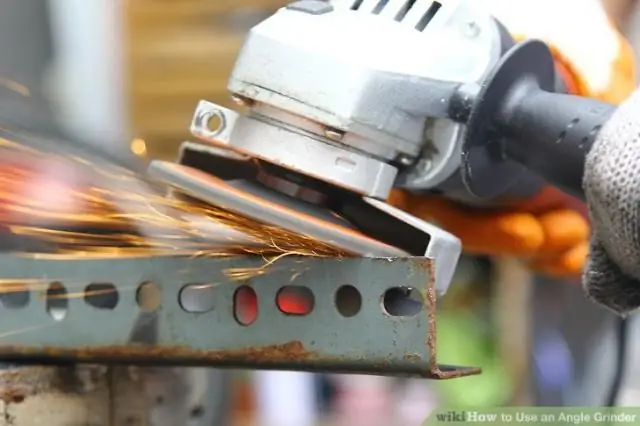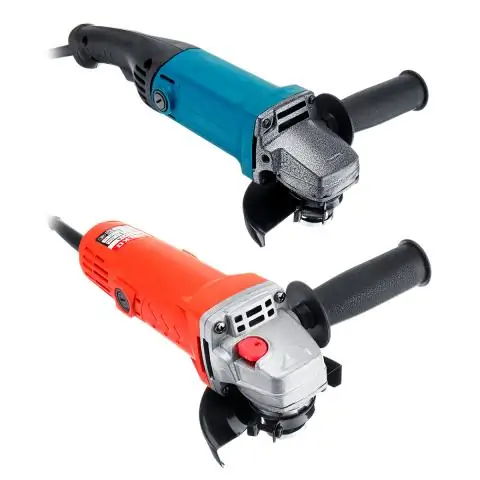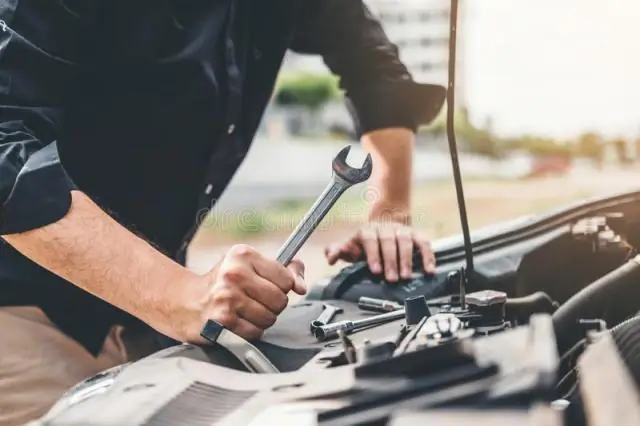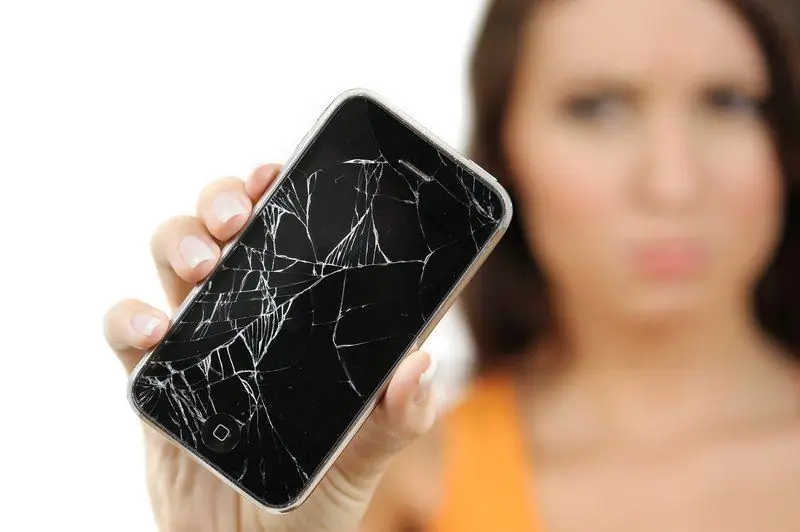
Table of contents:
- Author Bailey Albertson [email protected].
- Public 2023-12-17 12:53.
- Last modified 2025-01-23 12:41.
How to choose and easily replace a disc on a grinder

The grinder is a universal angle grinder (angle grinder) that replaces outdated types of hand tools. Its versatility is given by a replaceable working body - discs or nozzles. There are a large number of types of discs produced by different manufacturers: for low-power (household), medium-power and high-power professional angle grinders. Discs (nozzles) cut, grind, polish, clean the workpieces. They are used to process products made of steel and cast iron, non-ferrous metals and wood, stone, concrete and other materials. How to choose a disc for a grinder in accordance with the purpose of use, as well as how to remove and install discs correctly, read our article.
Content
-
1 Types of discs for grinders
-
1.1 Cut-off
- 1.1.1 Cut-off (abrasive) wheels for metal
- 1.1.2 Abrasive discs for stone
- 1.1.3 For wood
- 1.1.4 Diamond
- 1.2 Grinding and Roughing
-
- 2 How to choose a circle for a grinder
-
3 How to change a disc: step by step instructions
3.1 Video instruction: how to remove the old and put a new circle on the grinder
Types of discs for grinders
LBM is widely used in construction and repair technological operations. Grinder discs differ from each other:
- dimensions of the outer diameter and thickness;
- material and manufacturing method;
- purpose and maximum rotation speed.
The choice of discs for a grinder implies knowledge and consideration of the characteristics of not only the workpieces being processed, but also the capabilities of the tool itself.
Cut-off
The most used circles for angle grinders are also called abrasive. They are classified according to various criteria. There are discs for working with metal, stone, wood. There is also a diamond disc, which is used to work with the most durable and hard materials (reinforced concrete, porcelain stoneware, tiles, marble, granite and other natural and artificial stones).
Let us give a brief description of each species.
A common feature for all cutting discs is the classification by outer diameter and thickness. The outer diameter is:
- 115 mm for small household grinders;
- 125 and 150 mm for angle grinders of medium power and weight;
- 180 and 230 mm for powerful professional tools.
The disc thickness varies from 1 to 3.2 mm. It depends on the size of the nozzle: discs with a large diameter have a greater thickness; medium and small disks - any. The choice of disc thickness is influenced by:
- rotational speed of the working body of the grinder;
- estimated load.
Cutting (abrasive) wheels for metal
These circles are used to work with sheet steel body (disc thickness from 1 to 1.6 mm) and rolled steel: reinforcement, round timber, channel bars, angle bars and other types (disc thickness from 2.5 to 3.6 mm). There are special attachments for working with stainless steel, aluminum, cast iron and other metals.

Cutting disc for metal for grinder
Information about this is available on the surface of the disc in the form of an applied marking and a colored strip. Abrasive discs consist of several layers of fiberglass mesh, on which bakelite abrasive material (silicon carbide, corundum, electrocorundum) is pressed on both sides under high pressure. The reinforced abrasive discs are then placed in a heat treatment oven to gain strength. The preset heating temperature is 200 degrees. There the mass is sintered and becomes strong and resistant to breaking into fragments.
Abrasive discs for stone
They are absolutely identical to discs for metal and differ only in the used abrasives.

Circle for stone
For wood
They are made of high strength steel and have sharp teeth on the outer diameter. These nozzles work on the circular principle and are quite dangerous to work with. It is recommended to fix the grinder permanently with a special device.

Cutting disc for wood for grinder
Diamond
They are used for cutting high-strength materials from natural and artificial stone.

Diamond disc for stone grinder
There are different types of diamond discs for concrete, reinforced concrete, stone. Between themselves, they differ in fractional diamond spraying and in the type of cutting edge - solid, with large or small slots, notches. It is important to know that a diamond blade is not used for working with metal workpieces. It is difficult to understand the purpose of diamond discs in appearance. The best option is to consult a sales assistant or carefully study the package attachment before buying.
Some manufacturers of diamond blades paint the front side with paint, depending on the material for which they are intended:
- green - for granite;
- yellow - for plaster and tiles;
- blue - for marble and concrete;
- gray - for granite ceramics and tiles;
- orange - for bricks.
The diamond blade with segmented cutting blade is used for dry cutting of stones. Solid-edged wheels require water cooling. Slotted turbo discs operate at a higher speed than segmented blade discs.
Grinding and roughing
Grinding wheels are divided into four types:
-
Petal (emery) attachments remove old paint, primer or varnish, polish wooden products.

Flap disc for grinder This is what a petal disc looks like
Rust is removed with special wire wheels and stubborn dirt is removed
Stone products are polished with diamond modifications in the form of a bowl
Metal surfaces are polished with plastic or rubber discs. On the plates, you can attach removable discs with sandpaper, felt, sponge, cloth
Most sanding discs work with special pastes or fluids that include very fine abrasives. These attachments are used to grind surfaces of any materials, including automotive body parts in car services.
How to choose a circle for a grinder
When choosing the right attachment for the grinder, you need to pay attention to the following points:
- We select the required disc diameter (it should not exceed the maximum permissible size of the nozzle of a particular grinder model, which is limited by the size of the protective casing) and the area of its use. The area of use is indicated by the name of the disc: cutting, grinding, sharpening, etc. The type of disc can tell with what material it works. But often manufacturers indicate the type of material with the help of noticeable stripes of a certain color: green - concrete; blue - metal and so on. Sometimes a clear symbol is applied to the disc for the type of material for which the attachment is intended.
-
Examine the markings on the disc itself. It consists of numbers and letters of the Latin alphabet. The initial letters indicate the type of abrasive: A - corundum; AS - electrocorundum; C - silicon carbide. Next are the numbers indicating the grain size of the abrasive inclusions. This indicator affects the thickness of the removed material. Non-ferrous metals are processed with large (coarser to the touch) grains. They work on soft surfaces with good performance. Fine-grained wheels are used to cut, peel, grind blanks from various grades of steel. At the end, letters are written that indicate the hardness of the binder. The hardness increases with the increase in the serial number of the letter. An important rule of thumb: the softer the bonding material, the harder the material this nozzle can handle. Conversely, the harder the disc bond, the softer the workpiece material should be. The final part of the inscription consists of numbers indicating the maximum rotation speed. Its value is presented in revolutions / minute or meters / second.

Disc marking for grinder Be sure to read the labeling of the disc: all the information you need is indicated here
- It is extremely important to consider the capabilities of the specific grinder model for which the disc is being selected. Power, rotation speed, the presence of a manual switch to change the speed mode or automatic switching to the desired speed - these characteristics must be taken into account when choosing a disc.
How to change disc: step by step instructions
- Disconnect the grinder from the electrical network and use a special button to jam the rotation shaft with the disc.
- Unscrew the lock nut with a special double lug wrench. If the nut is tightened as a result of the disk jamming, then you can: try to unscrew it with a gas wrench, heat it with a cutter and cool it sharply (it will help 100%, but you need to be very careful), cut out the remains of the disk with a metal hacksaw. Quick-release nuts are a rather complex device that can be unscrewed and twisted by hand using a folding handle.
- Remove the old disc.
- Place the new disc on the seat flange.
- Screw in the lock nut and tighten it with a wrench.
- The replacement is complete.
Video instruction: how to remove the old one and put a new circle on the grinder
Summarize. As the king is made by the retinue, so the grinder is made an indispensable tool by removable disks. They expand the scope of the grinder, dramatically increase the productivity of labor-intensive operations, and improve the quality of the work performed.
In careless hands, the angle grinder is dangerous: the discs can jam in the body of the workpiece, break into pieces and fly in different directions. The hazard can be minimized by the high quality of the nozzle manufacturing, the correct choice and reliable fastening of the circle to the drive shaft of the grinder.
Recommended:
Care And Cultivation Of Blackberries In The Country: From Seeds, From Cutting, Video And Photo

Tips and practical advice for growing blackberries from seeds and cuttings. Soil preparation, watering, fertilization, care during the growth period
How To Choose The Right Grinder: Which Angle Grinder Is Better For Home And Summer Cottages + Video

Grinder selection criteria. Rating of the most popular models. Reviews of manufacturers. Tips: how to choose a grinder for home, professional use
How To Check The Serviceability And Repair The Grinder Anchor With Your Own Hands, Step By Step Instructions, Video

How to check the grinder anchor for faults. DIY repair. Rotor selection and replacement
We Repair A Coffee Grinder With Our Own Hands: How To Disassemble, Wash And Adjust, How To Grind Coffee Correctly + Video Instructions

What coffee grinders are, how to grind coffee correctly, what are the malfunctions, how to repair a coffee grinder with your own hands
How To Remove Scratches From The Screen Of Technology: How To Remove Them Yourself, Reviews, Video

Damage to gadget screens and how to fix them. Improvised and special means, reviews. Preventing scratches on screens and plastic parts
